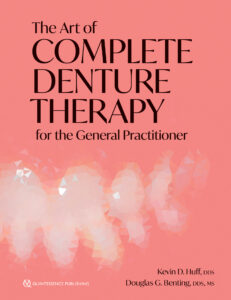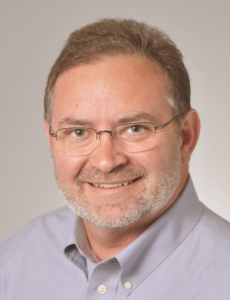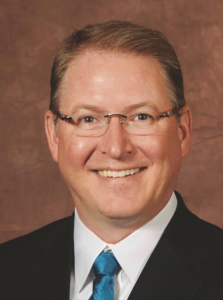It is no secret in the dental community that dental implants are seen as the best choice for tooth replacement. But not everyone can have dental implants for a variety of reasons. Many people still require traditional dentures, but most practitioners don’t feel confident making them. In their new book, experienced clinicians Drs Kevin Huff and Doug Benting show that complete dentures don’t have to be cumbersome or scary. The Art of Complete Denture Therapy for the General Practitioner is a thorough but concise guide to providing complete denture care from start to finish—without all of the boring stuff from classic textbooks! In fact, they include many pragmatic and cost-saving tips and tricks using unconventional tools to get the job done. Let’s look at some of their most used materials that you may be more likely to find at your local hardware store than from a dental supplier.
Play-Doh and more
You might have heard it before—colorful children’s modeling compound has a surprising number of uses in dentistry. And why not? It’s inexpensive, versatile, eye-catching, safe, and sometimes reusable depending on the application. Dr Huff uses it for blocking out undercuts in the mouth under implants and bridges when making an impression because it is water soluble and nontoxic. In denture fabrication, it can be used for boxing to form the land areas of master gypsum casts because it can be easily removed from the stone with a toothbrush and water.
Play-Doh can also be used to block out undercuts in a denture for remounting and repair procedures. As Dr Huff explains, “Before Play-Doh for boxing, I was taught to use a mix of pumice and quick-set stone in a rubber mixing bowl as the matrix for boxing. That took more time to set up and was a mess to work with.” Play-Doh, on the other hand, comes already set and tends to stick to itself while being easily moldable. It can be trimmed or pressed to create a seal between the frame and impression during boxing before the stone is poured, and is easily cleaned off when the master cast is ready to be separated from the base.

Fig 1 Boxed impression with Play-Doh and duct tape.
When using Play-Doh for boxing, it can be trimmed with a cake icing spatula, a table knife, or a lab knife. Then, the eraser end of a pencil or even a fingertip can be used to shape the Play-Doh to the impression. Tried the Play-Doh technique and have some excess when separating the master cast? An extra toothbrush can be wet and used to clean off the cast.

Fig 2 Using a pencil to shape the Play-Doh.
Corrected graduated cylinder
When you want an exact measurement of water or other liquid, a graduated cylinder can be your friend. But when you need this measurement to be consistently precise, you run the risk of over- or underpouring by a little bit or of getting a distorted view of the volume by looking at the cylinder from the wrong angle. Here’s a pearl for predictability: cut a hole at the measurement needed with a diamond disk. In this way, any excess water will drain out, providing you with exactly the volume the recipe calls for every time.

Fig 3 A corrected graduated cylinder allows excess water to drain out, allowing for more precise measurements.
Duct tape and ceramic tile
Duct tape serves as a great option for boxing a cast. Drs Huff and Benting use either duct tape or magnetic boxing strips during the box and pour technique. The authors explain, “The advantage of using duct tape is cost and convenience, but the tape is not reusable. Magnetic strips are inexpensive and can be reused many times; however, if the perimeter of the impression and Play-Doh base is greater than the length of the magnetic strips, they are not useful, and the duct tape method is more applicable.”
Along with the duct tape, a small ceramic wall tile, eg, 4 × 4 inches, can be used as a surface to perform the boxing technique. It is a good thickness for handling and is portable, reusable, and inexpensive.

Fig 4 Impression and cast on a tile with magnetic strips.
Making wax rims for the record base
When you need a warm surface to shape the wax, make your own hot plate! Have a paint scraper or metal putty knife? A Bunsen burner or butane torch? When the metal is heated over the torch, the resulting “hot plate” can be used to shape wax occlusal rims for the record base. Once your wax occlusal rim is cool, it can be polished with a section of an old nylon stocking to ensure a smooth surface.

Fig 5 Record base armamentarium, including basic putty knife and flame sources.
Conclusion
Drs Huff and Benting wrote their book in part to prevent denture making from becoming a lost art. In time, they have discovered tricks of the trade they share with you in their upcoming book. While most of the materials used in making dentures are specialized and official, they’ve found ways to improvise that work for them. What improvised tools do you use that work for you? Comment on our Facebook page, and check out The Art of Complete Denture Therapy for the General Practitioner!
Find a preview the book here.
 The Art of Complete Denture Therapy for the General Practitioner
The Art of Complete Denture Therapy for the General Practitioner
Kevin D. Huff and Douglas G. Benting
In dentistry today, heavy focus is given to learning the techniques of fixed or implant-supported restorations at the expense of learning how to make removable dentures. As a result, many talented clinicians lack the training and experience necessary to provide functional and dependable complete denture therapy to their patients, even when this could be the best treatment option for certain patients. This book seeks to solve that problem, taking the reader step by step through the process of fabricating removable complete dentures from the very first appointment through impressions, delivery, and maintenance. Sections alternate between clinical and laboratory steps (color coded for quick reference), and technical aspects of denture making, such as master cast fabrication and baseplate and occlusal rim formation, are covered in detail for clinicians who choose to perform them in-house rather than outsourcing to a laboratory. With sections devoted to jaw and occlusion evaluation, how to determine the appropriate occlusal scheme, and more, the book seeks to empower clinicians to improve their patients’ quality of life. Focus is also given to delivery and subsequent adjustment, followed by maintenance of existing dentures and determining when a new denture is needed. From start to finish, this book supplies everything you need to provide functional and esthetic dentures for your patients.
216 pp; 451 illus; ©2022; ISBN 978-0-86715-967-7 (B9677); Available now! US $148
 Kevin D. Huff, DDS, is a practicing general dentist and orofacial pain specialist. He earned his dental degree from The Ohio State University, where he also pursued advanced training in removable prosthodontics. Dr Huff is a Diplomate of the American Board of Orofacial Pain and has earned the status of Fellow and Master in the Academy of General Dentistry (AGD). He has served on the faculty at Case Western Reserve University School of Dental Medicine, Mercy Hospital General Practice Residency, and Spear Education, where he is currently a visiting faculty member. Dr Huff has published many articles, is a Fellow of the American College of Dentists and the International College of Dentists, and has been awarded the Lifetime Learning and Service Recognition Award from the AGD. Dr Huff is also an active member of the American Dental Association and the American Academy of Orofacial Pain, and he has been practicing dentistry in rural Ohio for 25 years.
Kevin D. Huff, DDS, is a practicing general dentist and orofacial pain specialist. He earned his dental degree from The Ohio State University, where he also pursued advanced training in removable prosthodontics. Dr Huff is a Diplomate of the American Board of Orofacial Pain and has earned the status of Fellow and Master in the Academy of General Dentistry (AGD). He has served on the faculty at Case Western Reserve University School of Dental Medicine, Mercy Hospital General Practice Residency, and Spear Education, where he is currently a visiting faculty member. Dr Huff has published many articles, is a Fellow of the American College of Dentists and the International College of Dentists, and has been awarded the Lifetime Learning and Service Recognition Award from the AGD. Dr Huff is also an active member of the American Dental Association and the American Academy of Orofacial Pain, and he has been practicing dentistry in rural Ohio for 25 years.
 Douglas G. Benting, DDS, MS, has served as adjunct associate professor in the Department of Restorative Sciences at the University of Minnesota and adjunct professor in the Department of Prosthodontics at the Arizona School of Dentistry and Oral Health, and he is currently a resident faculty member with Spear Education. He earned both his degrees from the University of Minnesota, and he has authored multiple articles for the Journal of Prosthodontics. He is a Fellow of the American College of Prosthodontists and Diplomate of the American Board of Prosthodontics. Dr Benting maintains a private practice in Phoenix, Arizona.
Douglas G. Benting, DDS, MS, has served as adjunct associate professor in the Department of Restorative Sciences at the University of Minnesota and adjunct professor in the Department of Prosthodontics at the Arizona School of Dentistry and Oral Health, and he is currently a resident faculty member with Spear Education. He earned both his degrees from the University of Minnesota, and he has authored multiple articles for the Journal of Prosthodontics. He is a Fellow of the American College of Prosthodontists and Diplomate of the American Board of Prosthodontics. Dr Benting maintains a private practice in Phoenix, Arizona.
